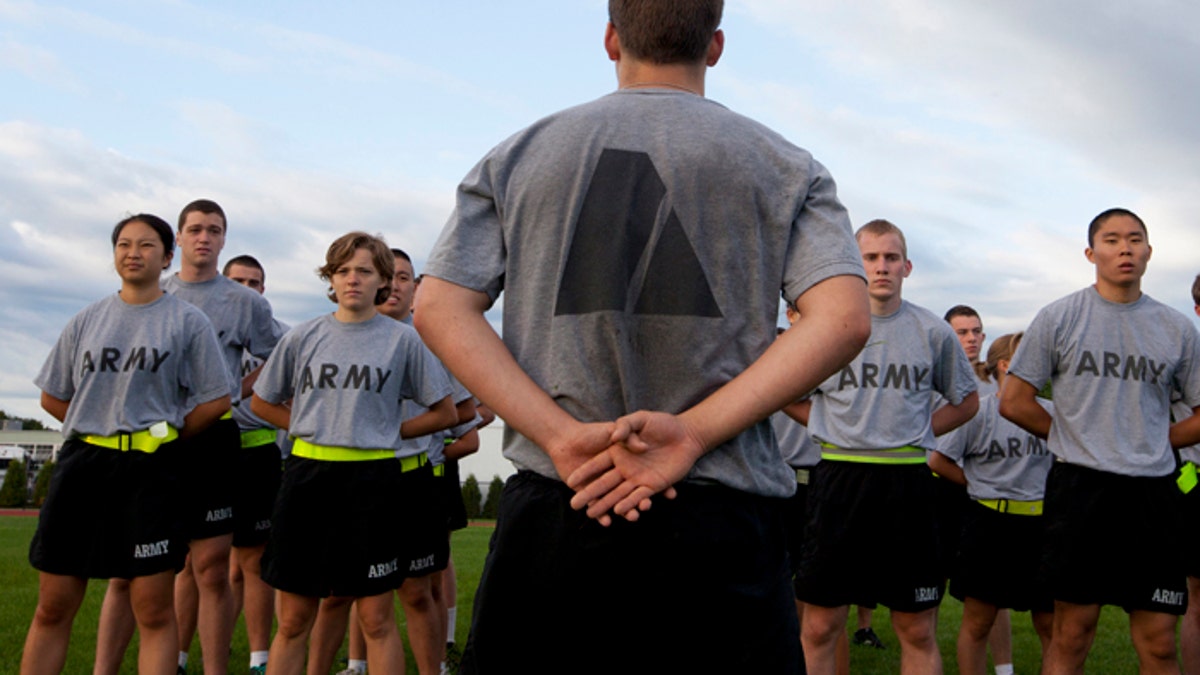
The Harvard University Army ROTC officially returned to campus this week, marking the first time in 40 years that the ROTC unit trained on Harvard's campus. (Rose Lincoln/Harvard Staff Photographer) (Harvard University)
For the first time since Richard Nixon was president, Army cadets are training at Harvard University.
The Reserve Officers’ Training Corps, better known as the ROTC, has been absent from the venerable Boston institution since 1971, when it was banned amid protests of the Vietnam War. But this week the program returned, as 25 cadets in gray shirts and black shorts – including 10 Harvard students – did an hour of calisthenics at McCurdy Outdoor Track behind Harvard Stadium.
[pullquote]
The school renewed its ties with ROTC after the military’s “Don’t Ask, Don’t Tell” law, which effectively banned gays from the military, was repealed.
“The resumption of ROTC training on campus marks a new phase in the historic relationship between Harvard and the military,” Harvard President Drew Faust told the Harvard Gazette. “The increased activity will make the military experience more familiar to many of our students, and it will introduce them to the leadership opportunities that the ROTC has to offer.”
Harvard opened ROTC offices for Navy and Army units last year, but no formal training took place on the campus until this week.
“It’s definitely cool to be a part of the experience of ROTC coming back to Harvard,” Charlotte “Charley” Falletta, an 18-year-old freshman from suburban Buffalo, N.Y., told the Gazette.
She had considered going to West Point, but said “it’s a really nice option to do ROTC here and get the Harvard experience,” said Falletta. “I’m grateful -- very grateful.”
The 10 Harvard students are part of the ROTC’s Paul Revere Battalion, a nine-school unit based at MIT. The battalion’s commanding officer, Lt. Col. Adam Edwards, told the Gazette he expects the unit to increase.
“We tend to grow at Harvard after the first semester, as people find out about us,” said Edwards, a West Point graduate and 19-year Army veteran who has done two tours in Iraq and one in Afghanistan.
First up for the battalion are physical fitness assessments later this year. Male cadets ages 17 to 21 will be required to do at least 71 push-ups in two minutes and females 42. Both male and female cadets must do 78 sit-ups in two minutes and complete a two-mile run.
To prepare, cadets must undergo mandatory workouts three mornings a week, rotating between Harvard, MIT and Tufts. The cadets also will get training in first aid and land navigation. Then, between their junior and senior years, comes the Leader Development and Assessment Course at Fort Lewis, Wash., which includes 29 days of continuous outdoor training meant to simulate a deployment.

